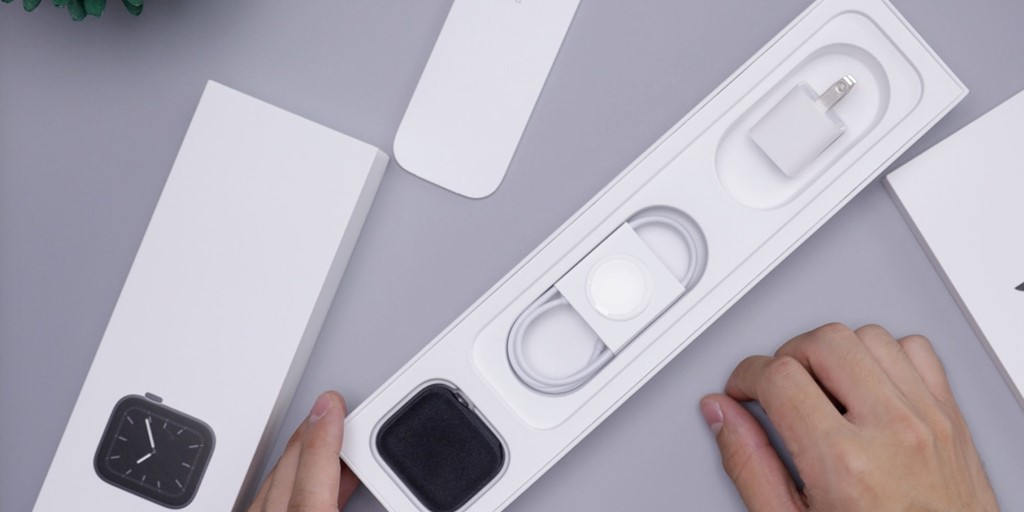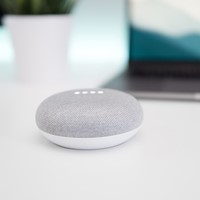What are wearables, and what is their role in the IoT market?
One of the hottest areas in technology right now is wearable devices. Fitness trackers, smartwatches, VR headsets and more are all part of this exploding market for connected devices. We are all surrounded by them. The range of applications for wearables is huge - from fitness tracking to virtual reality gaming, these gadgets have become a staple in many people's daily lives.
However, if you're new to this, what is wearable tech? How does it interact with IoT and what should you know about these devices? This blog post should answer all your questions.
What is wearable tech?
Wearable tech is the craze of digital devices that are worn on a person's body for extended periods of time. Wearable tech includes fitness trackers, smartwatches, virtual reality headsets and more.
The first wearable device was created in 2004 by Thad Starner from Georgia Tech University as an alternative to holsters for cell phones. Some wearables are simple fitness trackers that can measure steps taken and calories burned throughout the day. Others, like smartwatches or Google Glass, allow users to check email, text messages, stocks, weather forecasts and more without taking out their phone.
In recent years, the market for wearable devices has exploded and it is now outpacing the development of smartphones. From fitness trackers to smartwatches, wearables are everywhere - and that is why you cannot undermine its development!
How does wearable tech work?
Wearable tech is a broad term, with devices ranging from fitness trackers to smartwatches. But the principle behind all of them is simple: they're designed for people to wear on their bodies or carry around in their pockets. These are different from other technologies like smartphones, laptops, and desktop computers because mobile technology has so far relied on the use of hands to operate.
Moves like tapping on a screen, pressing keys or sliding open the keyboard are activities that can be done with one hand and in most cases without looking at what's being manipulated. Wearables on the other hand - because they're designed for us to wear on our bodies - require more attention than these traditional devices.
So, what's the point of wearables?
Wearables, from fitness trackers to smartwatches, are designed for different purposes. Some devices keep us healthier by helping monitor our heart rate or even sending a reminder to move when we've been sitting too long. Others make it easier for parents and pet owners alike to take care of their children or animals.
In some cases, wearables can offer us information that we may not have been able to access before - like how much sun exposure we're getting each day and what the pollution level is wherever we are.
What is the connection between wearable devices and IoT?
The IoT is a network of interconnected devices that enable data collection and transmission. A wearable device belongs to the IoT world, which is one of the fastest-developing segments in the broader technology industry, currently outpacing smartphones in development. The wearables industry has advanced beyond basic fitness trackers.
It has developed into advanced sports and smartwatches, as well as virtual reality headsets. The wearable technology industry generates a lot of data whose opportunities and potential applications are just beginning to be discovered. In one example, wearable devices such as Fitbit and Apple watches can collect biometric data of the wearer to help with their physical health.
Data captured by wearables provides companies with the opportunity to gain insight into their customers' health, habits, location or preferences. This can then be used for marketing purposes – as we see with fitness trackers like FitBit or Jawbone UP, which encourage users to share data with other users or brands in order to participate in challenges, win prizes and get discount coupons.
Types of wearables in iOT
1 - Smartwatches
Smartwatches are one of the most popular types of wearables, and while they may not be as powerful or capable compared to their smartphone counterparts, it's a device that you'll still need to carry with you. In fact, many people will more than likely replace their physical watch for this type. In addition to smartwatches, the IoT wearables market also includes fitness trackers, VR headsets, activity trackers and even clothing.
2 - Fitness trackers
Fitness trackers have now become ubiquitous in society. It is easy to find a fitness tracker that tracks steps, calories burned, and even sleep patterns. How do fitness trackers work?
Typically worn on the wrist like a watch or clipped onto clothes with an accompanying app to view data in various formats including maps, charts and graphs, this discreet monitoring device can provide insights into everything from heart rate and calories burned to periods of deep sleep.
Fitness trackers can help you monitor your progress and keep motivated, but they are not a magic bullet for weight loss or any other goal. The data it generates is only as good as the information you input: if you don't enter accurate details of what time you go to bed, how much water consumption each day etc., the fitness tracker will be of little use.
Different models have different strengths and weaknesses, but all share the same basic idea: to provide insights into your habits which you can then use in order to improve your lifestyle. In the next few years or so it will be possible for companies like Fitbit to release more advanced wearable devices with blood pressure monitors installed alongside other sensors such as an electrocardiogram.

3 - VR headsets
VR headsets are a new area of wearables that allow users to experience an immersive virtual reality. These devices work by simulating the physical presence and environment in which they’re placed, such as being able to be inside a 360 degree movie or game through head movement tracking and stereoscopic display technology. In 2017, it was estimated that there were more than 100 million VR headsets sold, with the number expected to grow exponentially into 2020. In 2018, it was also calculated by Statista and UploadVR that in just two years’ time (between 2016-2018), US consumers’ spending on virtual reality increased from $411 million to over $700 million.
4 - Hearables
A rapidly emerging category of connected devices are Hearables. These include personal sound amplification products (PSAPs), in-ear earbuds, and hearable speakers that use wireless connectivity to stream music from a smartphone or other device. Here's the big distinction: They don't have headphone wires running between them like traditional headphones do - they're wireless.
Hearables are another example of successful IoT wearables. These are devices worn around the neck and not on a user's body. Hearables collect data from one or more sensors, like heart rate monitors and GPS trackers. They then transmit this information wirelessly to either stationary processing units in hospitals or clinics (where they can monitor patients remotely) for medical diagnostics or servers that analyze the data to provide real-time coaching feedback for athletes and other fitness enthusiasts.
Wearables in IoT: Use Cases
Healthcare
Wearables are essential in the IoT space due to their ability to generate data. Devices, like fitness trackers and smartwatches, are an important category for this technology because they can collect a user's heart rate information or movement patterns without having to install electrodes on the skin. This is especially useful when monitoring patients who cannot move freely.
For example, the AliveCor Heart Monitor is a mobile ECG device that fits around your neck and can detect cardiac arrhythmias to provide feedback in real-time. There are also more implications for healthcare; wearable tech can be used to diagnose patients remotely and monitor their condition if they have chronic diseases like epilepsy or diabetes. "Smart" clothing has even been developed that could warn wearers of seizures before they happen, thanks to sensors that detect fast or irregular heartbeats.
Sports
One of the most exciting areas is in sports; wearable devices are already being used extensively by top athletes and coaches for training purposes. Some NFL players even use wearables during games as a form of injury prevention - if they suffer an impact on one side of their body, the data is transmitted to medical staff and they are substituted for a player on the other side of their body.
Fitness
Athletes and fitness enthusiasts can also use wearables to monitor how hard they're working during training, or as feedback after sessions. Data from wearable devices helps coaches assess if an athlete needs more rest between workouts so that they don't overdo it and risk injury.
Monitoring
Wearables can also be useful for monitoring. They make it easier for parents and pet owners alike to take care of their children or animals. Monitoring data in places like factories decreases workplace accidents but also decreases workplace fatigue. For parents with young children, these wearables offer a way to keep an eye on their little ones from afar while they are at work or even when they leave the house for long durations of time.
The future of wearable IoT
The future of wearable tech is bright, with medical devices that help people live healthier lives set to see explosive growth over the next few years. In addition, while the market for basic fitness trackers may be saturated, a new wave of fitness-oriented wearables is on the horizon.
Wearable tech has never been stronger than it is today - despite competition from phone manufacturers and other emerging technologies. It's only just beginning to reach its potential in industries such as healthcare and manufacturing, so whether you're interested in wearables for personal use, or want to invest and reap the benefits of this growth market, now is certainly a good time.
We're just at the beginning stage with wearable technology - it's likely that there will be more advances coming out soon than we could have ever predicted.
In the future, wearables will likely become as commonplace as smartphones are today with people wearing them all day long to monitor their health (think a Fitbit or Apple Watch) while also connecting to augmented reality glasses like Google Glasses or Oculus Rift that provide valuable information about an individual's surroundings, and more.










 Angry Nerds (Poland)
Angry Nerds (Poland) Angry Nerds (USA)
Angry Nerds (USA) Angry Nerds (Canada)
Angry Nerds (Canada)



